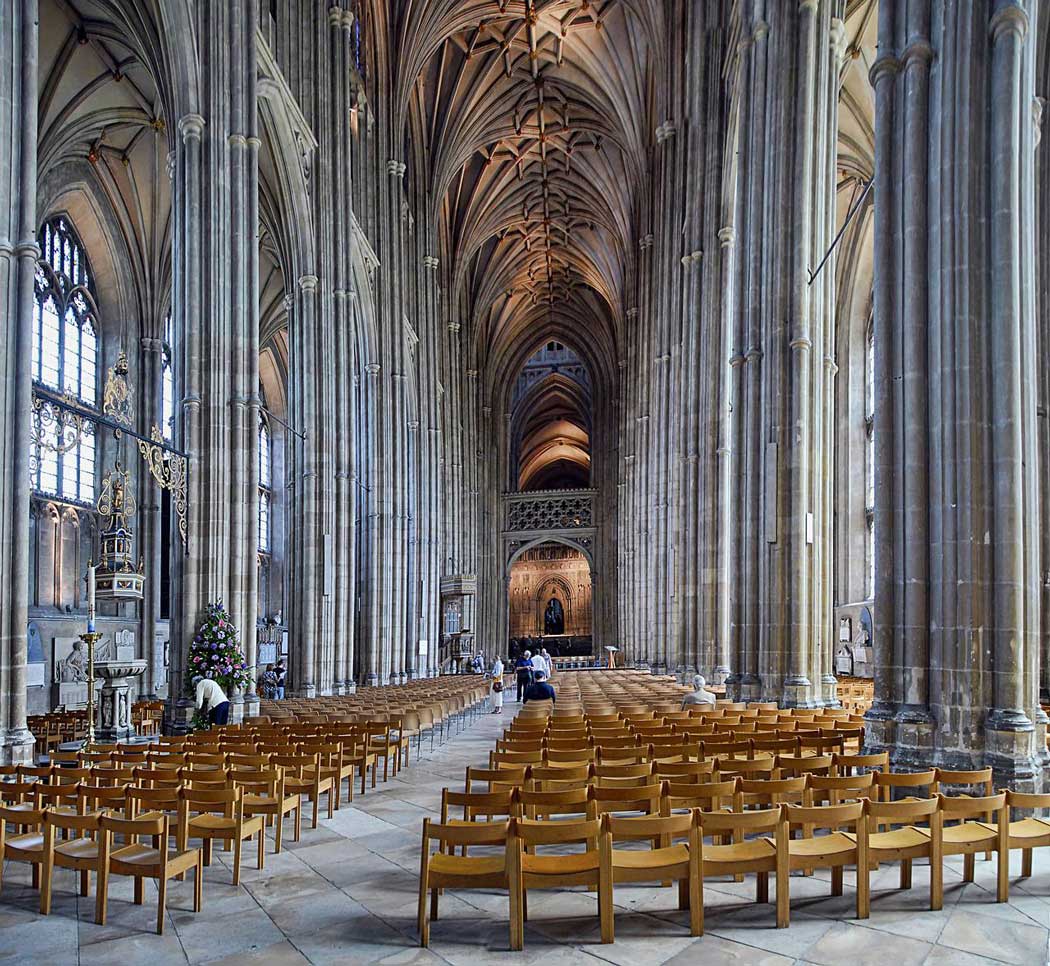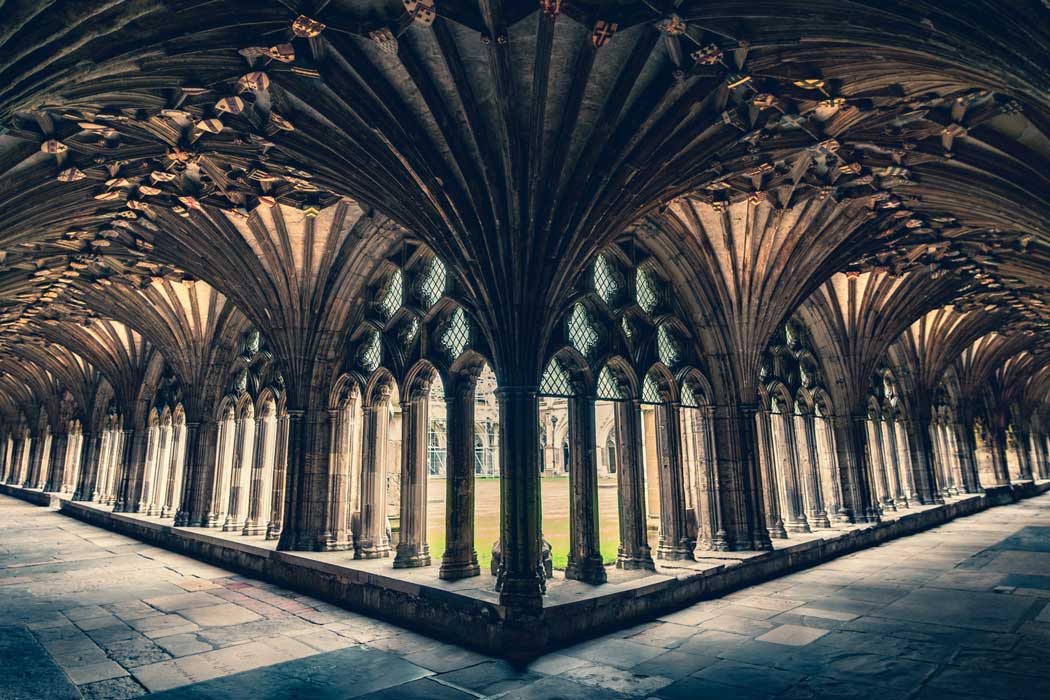Canterbury Cathedral is England’s most important cathedral and Canterbury’s top attraction.
The cathedral has a rich historical significance. It was founded in 579 by Augustine of Canterbury, who was the first Archbishop of Canterbury and is considered to be the founder of Christianity in England (although there were some Christians in England prior to this date).
Following a fire in 1067, it was rebuilt between 1070 and 1077 by Lanfranc (the cathedral’s first Norman archbishop) using French stone with a design closely resembling the Abbey of Saint-Étienne in Caen.
The murder of archbishop Thomas Becket by Henry II’s knights in 1170 is probably the most significant moment in the cathedral’s history and the cathedral became a popular place of pilgrimage following Becket’s martyrdom. This event has been portrayed in literature, most notably in TS Eilot’s 1935 play Murder in the Cathedral and the pilgrimage following Becket’s death has been represented in Geoffrey Chaucer’s The Canterbury Tales.
The cathedral contains the tombs of the Black Prince and King Henry IV and a shrine to Thomas Becket.
Canterbury Cathedral is the seat of the Archbishop of Canterbury, who is the head of the Church of England and who traditionally officiates at royal weddings, funerals and coronations.
The cathedral has its own police force, the Canterbury Cathedral Close Constables.
What to see at Canterbury Cathedral
The cathedral is an excellent example of an early Norman era cathedral with Gothic-style additions added in the 12th century.
It is noted for the Shrine of Thomas Becket which sits in a purpose-built extension that was completed in 1184 to house Becket’s relics.
It is also noted as having the tomb of the Black Prince (also known as Edward of Woodstock). The Black Prince was King Edward III’s eldest son, who is noted as one of the greatest commanders of the Hundred Years’ war and regarded as one of the greatest knights of his age. King Henry IV is also interred in the cathedral.
Canterbury Cathedral also features the Chair of St Augustine, which dates back to the Norman period and has been used by the Archbishop of Canterbury for ceremonial purposes since 1205.

There is an exhibition space in the cathedral crypt, which has exhibits about the history of the cathedral including displays about the Black Prince and Thomas Becket. Artefacts on display include the grant from William de Tracy, the 11th-century Accord of Winchester, the Lyghfield Bible, the Liudhard Medalet and the Canterbury Cross.
The cathedral complex also includes several monastic buildings including cloisters and the chapter house with stained glass windows depicting Canterbury’s history.

Visiting Canterbury Cathedral
Canterbury Cathedral is centrally located within the city walls and most points of interest within the city centre are no more than a 5–6-minute walk away.
The cathedral and its precincts are open to the public every day with slightly shorter opening hours on Sundays.
Admission ranges from £18 to £21 per person and for an additional £5 charge you hire a multimedia guide or take a 75-minute tour of the cathedral, which operates at 11am and 2pm Monday to Saturday. There is also a £5 60-minute stained glass tour that operates at noon Monday to Saturday.
Every hour, at a quarter past the hour, there is a free 15-minute mini talk about a specific topic. Mini talks are included in your entry fee and take place near the cathedral entrance near the western end of the nave.
Allow 1–3 hours for your visit.
Book your tickets (including audio guide) to Canterbury Cathdral
Save time by pre-booking your tickets to Canterbury Cathedral. Tickets include an audio tour.
We may earn a small commission if you buy your tickets after clicking this link.


There are no comments yet.